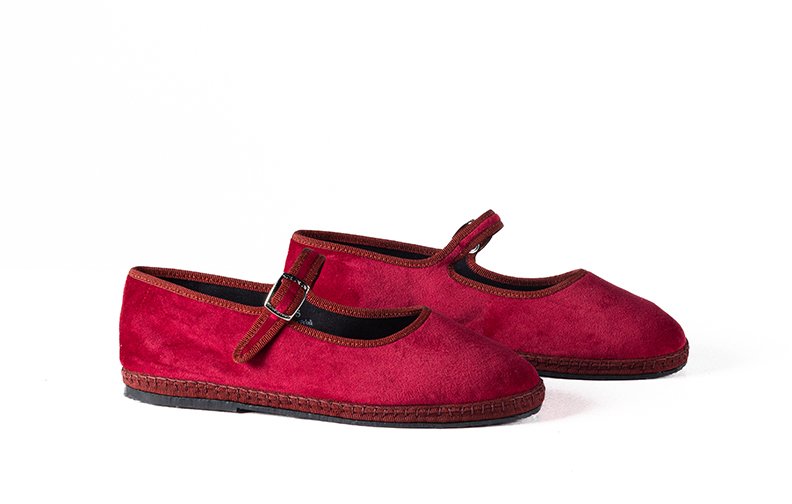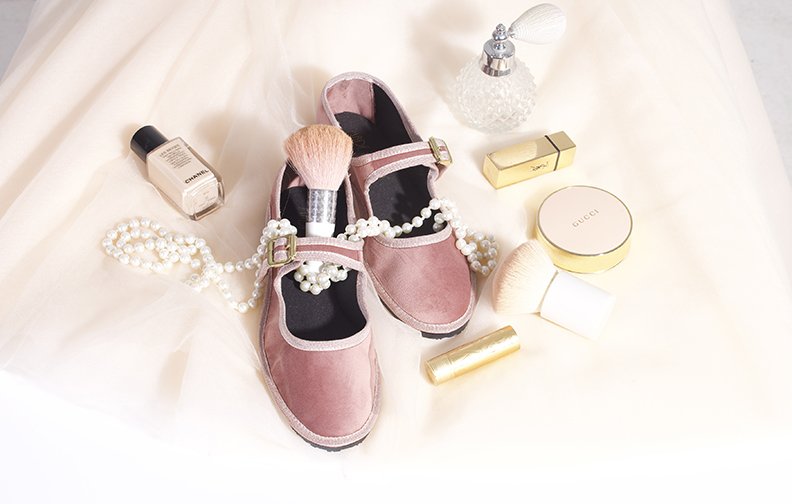Discover Vivace, our hand made heritage slipper collection





About the Vivace collection
Our Vivace collection - meaning “full of life and joy” - of Friulane shoes is handcrafted in Friuli, Italy by family businesses who have been making them for generations.
The collection is inspired by the founders' travels through Italy and reflects iconic landscapes, such as SKY, a soft blue inspired by Capri’s skies, VIOLET, recalling wisteria-covered terraces on the Amalfi coast.
The collection features the Giulietta, a close-fitting shoe, and its more structured, playful counterpart, Giulietta 2. The Mary Jay updates the Mary Jane style with a buckle and strap, while Mary Jay 2 adds a raised, elegant silhouette with a hidden button closure. We hope you will enjoy these timeless shoes for all occasions.
About the Friulane
Friulane shoes, or "furlane," originated in the 1800s in Italy's Friuli region, made from simple materials like fabric scraps and old tires. Valued for their comfort and durability, they were ideal for both outdoor farm work and indoor use. After World War I, gondoliers in Venice adopted them for their non-slip soles, and soon, Venetian aristocrats embraced them for their understated elegance. Over time, these genderless, versatile shoes became a staple of Italian fashion, renowned for their craftsmanship, comfort, and ability to transition from casual to elegant settings.
Story of the Friulane
Friulane shoes, also known as "furlane," are a unique and storied part of Italian footwear history. They trace their origins to the rural Friuli region in northeastern Italy, where they were initially crafted in the 1800s by local peasants. These shoes were handmade using the simplest materials available—fabric scraps for the uppers, jute padding for the insoles, and old bicycle tires for the soles. What began as practical, everyday footwear evolved into a symbol of ingenuity and sustainability long before these ideas became part of modern fashion.
The early Friulane were particularly beloved for their comfort, durability, and insulating properties, perfect for the agricultural lifestyle of the Friulian people. Their flat, closed-toe design and rubber soles offered both protection and warmth, crucial for the labor-intensive tasks of rural life. Yet, their light weight and ease of wear made them equally practical for indoor use, a key feature in a time when floors were often cold and unheated.
Despite these humble beginnings, Friulane shoes became more than just practical footwear. After World War I, they found a new purpose on the canals of Venice, where gondoliers adopted them for their non-slip soles that protected both the shoes and the gondolas from damage. The soft rubber soles made them ideal for the delicate surfaces of gondolas, while the hand-made construction added a level of durability and comfort.
As their use spread, Friulane shoes began to attract the attention of the Venetian aristocracy, who were charmed by their simplicity, comfort, and understated elegance. Aristocrats often wore them as casual footwear at home or during leisurely strolls along the canals. The shoes soon became a staple in the wardrobes of all Italians, especially as they began to be customized with luxurious materials like velvet and satin.
Crafted with a flat sole and closed toe, the evolution of the shoe over time showcases the artistry of Italian craftsmanship. One of the key features of Friulane shoes is the meticulous hand-sewn "T-stitch" that joins the upper and midsole, creating a seamless connection without the use of glue. This craftsmanship has been passed down through generations, with entire families dedicated to the art of making Friulane shoes. Originally cut from used bicycle tires, the concept of upcycling was deeply embedded in the creation of Friulane soles long before it became a trend in modern fashion.
Their design—genderless, simple, and versatile—has remained popular through the years. Friulane shoes can be worn indoors or outdoors, casually or dressed up, making them a timeless and enduring part of Italian fashion. Their durability, comfort, and understated charm have allowed them to transcend centuries, continuing to be a favorite for both casual wear and elegant occasions.
About the Vivace collection
Edit Six’s debut Vivace collection brings the heritage of the classic Friulane shoe to a contemporary audience. Handcrafted in Friuli, Italy, the collection merges time-honored Italian shoemaking techniques with modern design. Named "Vivace," meaning "full of life and joy" in Italian, the collection reflects the excitement of travel, as seen in the vibrant colors inspired by the founders' experiences across Italy.
Each color in the collection tells a story of Italy’s diverse landscapes. For example, SKY, a delicate light blue, evokes the serene skies over Capri, while VIOLET draws inspiration from the wisteria-covered terraces of the Amalfi Coast. LIPSTICK, a bold red, captures the stylish energy of Milan, perfect for evening strolls and aperitivos. GREIGE, a sophisticated neutral, is inspired by the muted tones of ancient Roman ruins, blending history with modern elegance.
The collection features both the classic Friulane loafer and Mary Jane styles. The Giulietta is a sleek, close-fitting shoe suitable for both casual outings and formal events. The Giulietta 2 offers a more structured, raised design for a youthful, playful touch. The Mary Jay reinterprets the traditional Mary Jane style, featuring a buckle and strap for added elegance, while the Mary Jay 2 adds a structured silhouette with a hidden button closure beneath the buckle, combining ease with sophistication.
Through the Vivace collection, Edit Six revitalizes the beloved Italian Friulane tradition, infusing it with a contemporary twist. Each pair embodies the essence of Italian craftsmanship, versatility, and the joy of discovery, making these shoes a timeless addition to any wardrobe—from casual days to elegant soirées.








